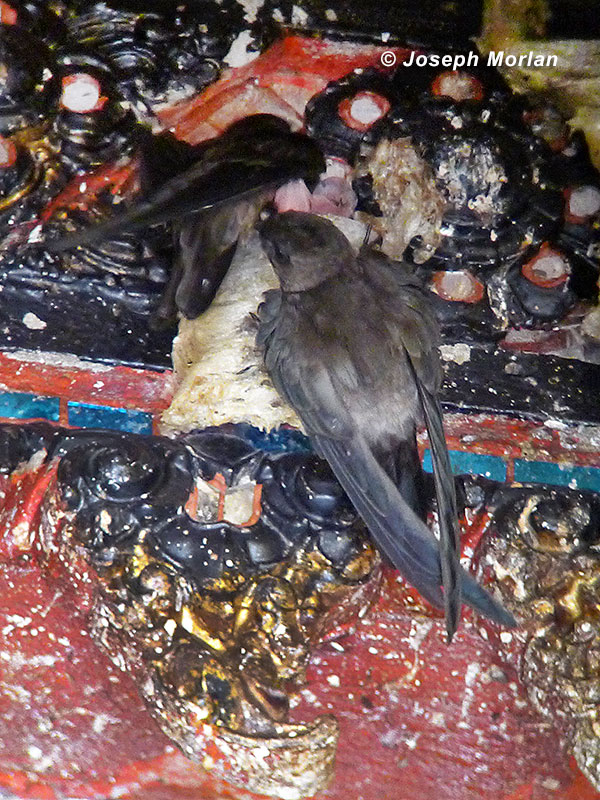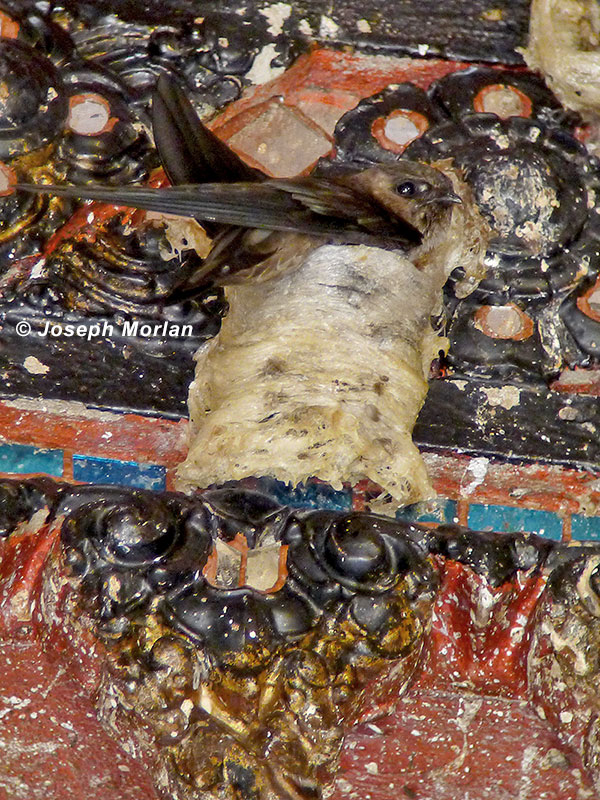
 This species has been
treated as a race of Edible-nest Swiftlet (Aerodramus fuciphagus) which replaces it to the south. Germain's
Swiftlet has a paler rump and underparts compared to Edible-nest Swiftlet and most recent authors treat it as a
separate species. The pale rump is visible in the top photo which shows two adults and what appear to be two pink
unfeathered young peeking out from the nest.
This species has been
treated as a race of Edible-nest Swiftlet (Aerodramus fuciphagus) which replaces it to the south. Germain's
Swiftlet has a paler rump and underparts compared to Edible-nest Swiftlet and most recent authors treat it as a
separate species. The pale rump is visible in the top photo which shows two adults and what appear to be two pink
unfeathered young peeking out from the nest. A colony has nested under the ceiling inside this historic temple for many years. One of the monks raises some of the babies that periodically fall out of the nests, feeding them mealworms.
The nests are used commercially to make birds-nest soup. The swifts build the nests from salivary secretions which harden like glue when exposed to the air. Most other swifts also use saliva in their nests, but include many twigs or other plant matter which make their nests undesirable for making soup.
These colonial birds normally nest in natural caves, but they take readily to buildings, especially "swift hotels" which are constructed especially for them. These hotels are highly lucrative businesses along the coast of Central Thailand. The nests are harvested after they are used by the birds so the resource is sustainable.
Birdlife International, Clements, and Sibley and Monroe call this species "German's Swiftlet." However IOC and OBC spell it Germain's Swiftlet which I prefer because it was named in honor of M. Rodolphe Germain.
http://www.biodiversitylibrary.org/item/98694#page/249/mode/1up
My understanding is that the next edition of Clements will change the English name to Germain's Swiftlet. The official Thailand Checklist uses the name "Pale-rumped Swiftlet." Another English name for it is "Oustalet's Swiftlet" (Howard & Moore).
Photographers must always be especially sensitive to disturbing nesting birds. However, this photo was taken in natural light, digiscoped from a considerable distance where tourists and visitors walk and take photos all the time. The birds are very much used to people at this site. I judged there would be no effect on nesting success under the circumstances.
Digiscoped with Panasonic DMC-LX5 | Nikon FieldScope III | 30XWA |hand-held (no adapter).